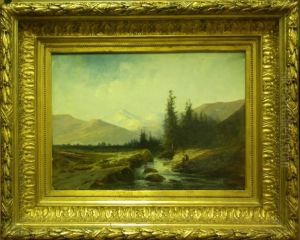Lortet Paintings
Louis Charles Émile Lortet, born in 1836, was a French physician, archaeologist, and naturalist, rather than being renowned as an artist in the traditional sense of painting or sculpture. His multifaceted career spanned various fields of study, reflecting the intellectual curiosity and broad interests of many scholars during the 19th century. Lortet's contributions to the different disciplines he engaged with were significant, intertwining the natural sciences with archaeology in a way that was innovative for his time.
Lortet's medical career was distinguished by his work in pathology and his interest in comparative anatomy, which led him to become a pioneer in the study of diseases across different species. His medical research was deeply informed by his archaeological and naturalist expeditions, particularly those in the Lake Geneva area and the Near East, including Syria and Lebanon. These expeditions allowed him to collect and study a wide range of artifacts and biological specimens, contributing valuable insights into the ancient civilizations and natural histories of these regions.
As an archaeologist, Lortet made significant discoveries, including uncovering evidence of prehistoric life and ancient human civilizations. His work in the Levant was pioneering, contributing to the understanding of the cultural and natural history of the Middle East. His interdisciplinary approach, combining medical knowledge with archaeological and naturalist research, was ahead of his time, laying groundwork for future scholars in these fields.
Lortet's legacy is preserved through his numerous publications, which include detailed accounts of his expeditions, studies on comparative pathology, and findings in archaeology. His work exemplifies the 19th-century scholarly spirit of inquiry and exploration, transcending the boundaries of single disciplines to contribute to a broader understanding of human and natural history. Although not an artist in the conventional sense, Lortet's life and work embody the artistry of discovery and the pursuit of knowledge across diverse fields. He passed away in 1909, leaving behind a rich legacy of interdisciplinary scholarship.
